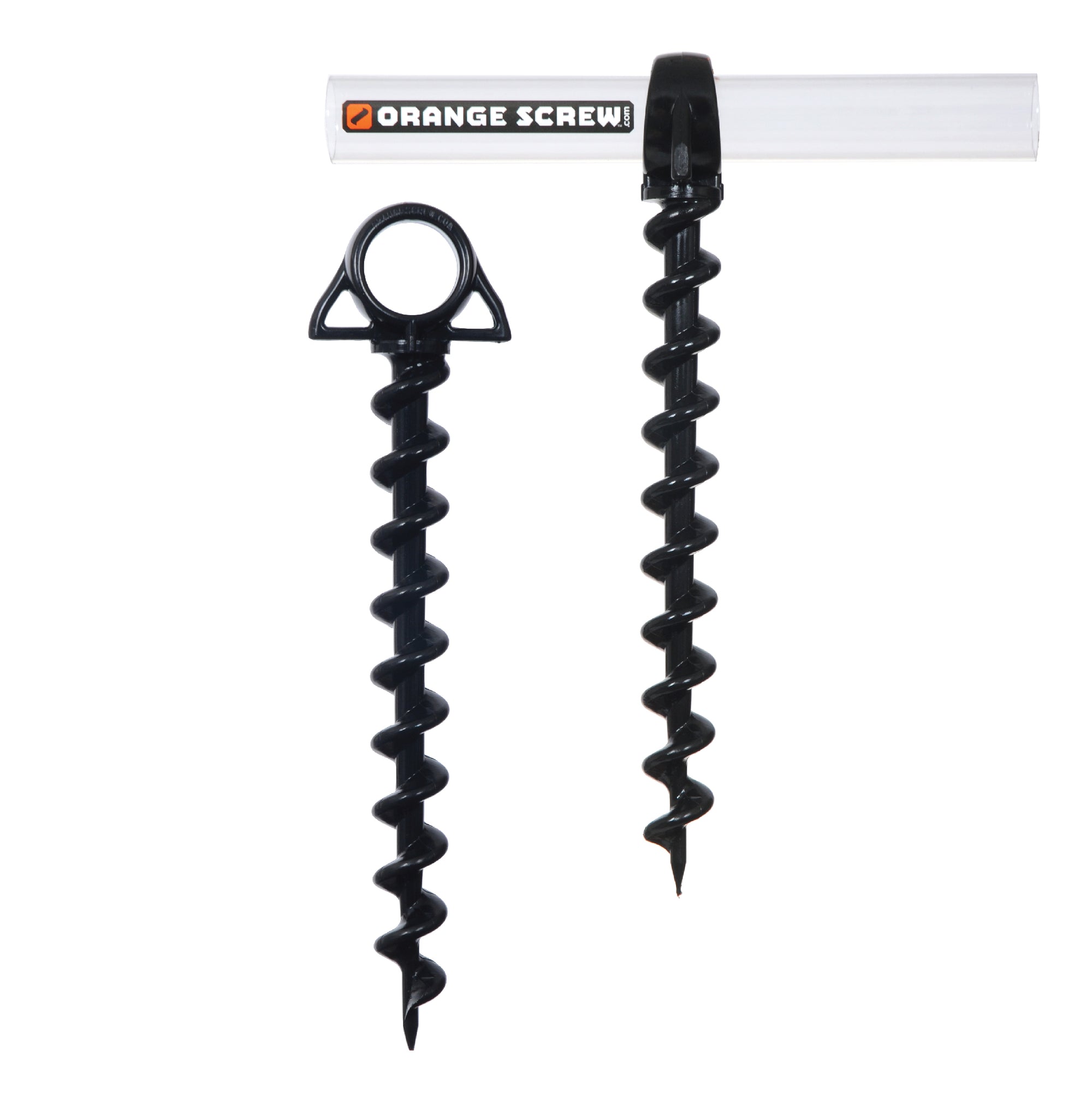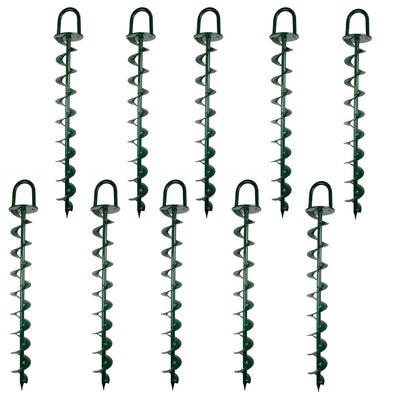Explore the Different Kinds Of Ground Support for Your Next Project
From auger supports, which succeed in diverse dirt problems, to stake anchors designed for short-lived installments, the choices are numerous. Additionally, concrete and screw supports existing distinct advantages in certain scenarios, while deadman supports are customized for applications requiring resistance to side pressures.

Auger Anchors
Auger supports are a popular option in various building and construction and landscape design jobs due to their unique style and effective securing abilities. These anchors contain a helical screw-like shaft that is driven right into the ground, enabling a stable and safe and secure hold. The spiral style facilitates very easy installment and makes the most of resistance versus lateral pressures, making auger anchors particularly effective in applications such as secure fencing, momentary structures, and erosion control.
The setup process of auger anchors is reasonably uncomplicated. They can be manually or mechanically mounted, depending on the dimension and needed deepness. This versatility permits their usage in diverse dirt problems, from sandy to clayey surfaces. Auger anchors can be easily eliminated and recycled, which adds to their cost-effectiveness and sustainability.
Among the substantial benefits of auger supports is their ability to disperse tons equally throughout the surrounding soil, minimizing the danger of dirt disturbance and decreasing environmental effect. In addition, they are less at risk to heaving or loosening with time compared to traditional anchoring approaches. As a result, auger anchors are an exceptional selection for jobs requiring long lasting and dependable anchoring remedies.

Risk Anchors
When it concerns securing structures in a selection of outside applications, risk anchors supply a reliable and uncomplicated service. These supports are usually built from durable materials such as steel or aluminum, designed to stand up to environmental stress and anxieties while offering ideal stability. Their straightforward design enables fast installment, making them an ideal choice for short-lived or permanent anchoring needs.
Stake supports are especially helpful in securing outdoors tents, covers, and other lightweight frameworks versus wind and weather condition. They operate by being driven right into the ground at an angle, producing a strong hold that stands up to pull-out pressures - Ground Anchor. The efficiency of stake supports depends on numerous aspects, including dirt type, dampness material, and the angle of installation
For included protection, many stake anchors include add-on points for straps or ropes, allowing for stress changes as required. In applications such as landscape design or construction, they can efficiently stabilize tools or structures on uneven surface. On the whole, risk supports supply a flexible and cost-effective remedy for protecting various outdoor installments, making them a favored choice for specialists and do it yourself fanatics alike.
Concrete Anchors
Concrete supports give a robust service for protecting structures to concrete surfaces, making certain stability and safety in different applications. These supports are important for jobs ranging from property buildings to massive industrial installations. They can be found in various kinds, including expansion anchors, glue supports, and undercut supports, each created for specific load requirements and environmental conditions.
Sticky anchors make use of high-strength epoxy or resin to bond the anchor to the concrete, offering exceptional load-bearing capacities, particularly in split concrete scenarios. Undercut anchors produce an one-of-a-kind form within the concrete, offering outstanding holding power, particularly in applications where tensile loads are common.
Choosing the suitable concrete support entails considering factors such as the weight of the lots, the condition of the browse around this web-site concrete, and ecological problems. Appropriate setup methods are essential to guarantee optimum performance and reliability. When performed appropriately, concrete supports dramatically boost the structural honesty of various tasks, making them essential in modern-day construction techniques. Comprehending the specific requirements of your project will help in selecting the ideal kind of concrete support for the task.
Screw Anchors

Screw anchors are a flexible securing solution that can be successfully employed in a range of applications where traditional concrete anchors may not be enough. These anchors contain a helical style that enables them to be quickly driven into the ground, making them suitable for usage in soil and various other substratums. Their special framework gives exceptional holding power and resistance to pull-out pressures, making them ideal for numerous projects, from landscaping to structural support.
Among the main advantages of screw anchors is their simplicity of installment. They call for marginal equipment and can commonly be set up without the demand for excavation, which conserves both time and labor costs. Additionally, screw anchors can be eliminated and reused, using a lasting solution for temporary applications.
Screw anchors are particularly advantageous in areas where soil conditions are challenging, such as loosened or sandy dirts. Their capacity to be set up at varying depths enables modification based upon particular project needs. Overall, screw supports offer a efficient and dependable anchoring technique, making them a superb choice for engineers and contractors seeking reliable options for their tasks.
Deadman Anchors
Deadman supports act as a durable option for supporting structures in challenging problems, specifically where typical securing methods might fail. These anchors include big, heavy things hidden underground, which develop resistance against lateral pressures. The layout generally entails a horizontal part, such as a block of concrete or a metal plate, hidden in the soil, to which cords or straps are attached.
The efficiency of deadman anchors lies in their ability to disperse loads over a this bigger area, lowering the danger of failing in unsteady dirt conditions. They are specifically advantageous in applications such as preserving wall surfaces, momentary structures, and incline stabilization, where dirt movement can jeopardize the integrity of the framework.
Setup of deadman anchors calls for cautious preparation to ensure they are placed at the appropriate depth and positioning, optimizing their load-bearing ability. While they might require more labor and product than lightweight supports, their reliability in unfavorable conditions makes them invaluable for long-lasting tasks. Deadman anchors are flexible and can be adjusted to numerous applications, making them a best selection for engineers facing one-of-a-kind challenges in their projects.
Verdict
In recap, choosing the suitable sort of ground anchor is crucial for making certain security and security in numerous tasks. Auger supports excel in Ground Anchor varied soil conditions, while risk supports fit temporary applications. For concrete surface areas, growth and glue supports supply dependable choices, and screw anchors use versatility in tough surfaces. Deadman anchors are especially effective in withstanding lateral forces for keeping walls. Mindful factor to consider of these choices will certainly improve job end results and architectural stability.
In addition, concrete and screw anchors present unique advantages in particular circumstances, while deadman supports are customized for applications calling for resistance to side pressures - Ground Anchor.Auger supports are a popular choice in various construction and landscape design projects due to their distinct style and effective anchoring abilities. They come in various types, including development supports, glue supports, and undercut anchors, each developed for certain load demands and ecological problems
Adhesive anchors utilize high-strength epoxy or material to bond the support to the concrete, using premium load-bearing abilities, especially in fractured concrete circumstances. In general, screw supports supply a reliable and reputable anchoring approach, making them an exceptional choice for specialists and designers seeking reliable services for their tasks.
Comments on “Key Things to Keep in Mind Before Investing in a Heavy-Duty Ground Anchor”